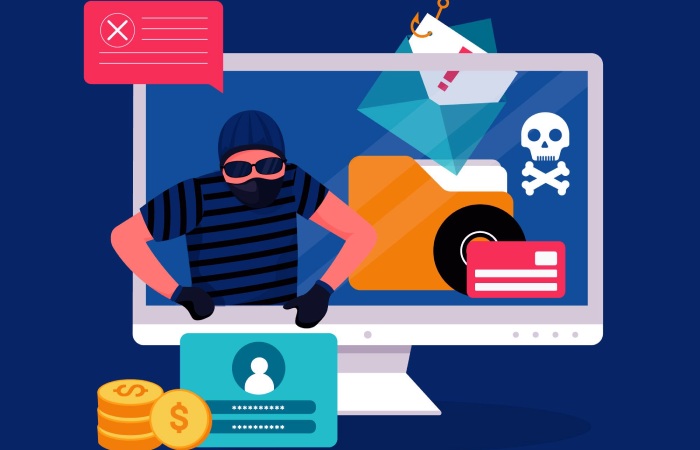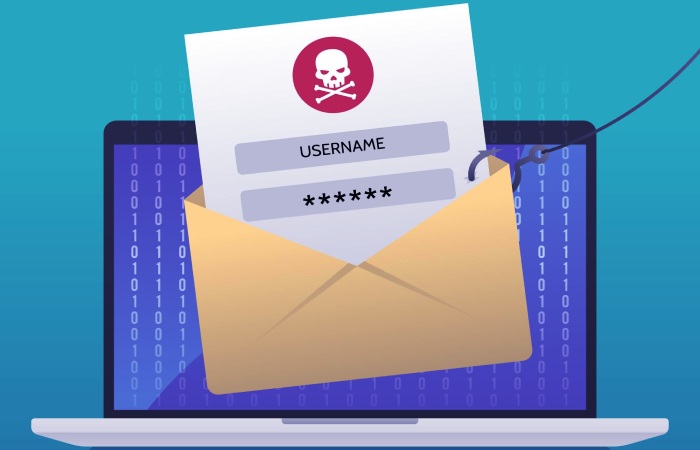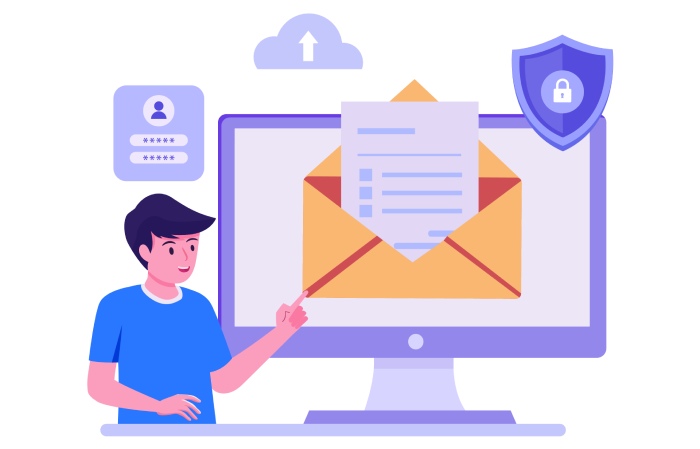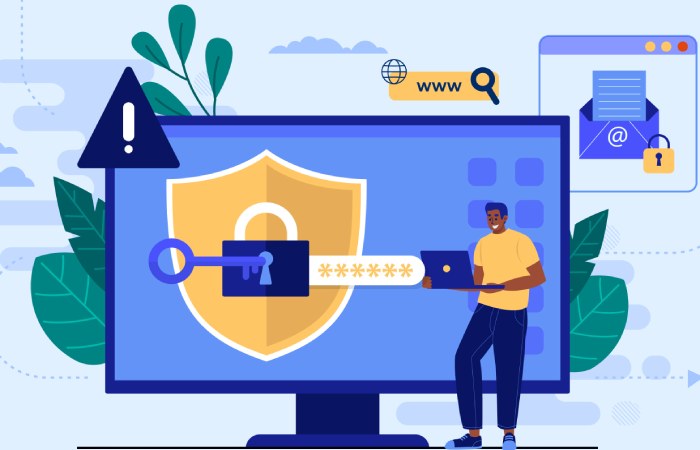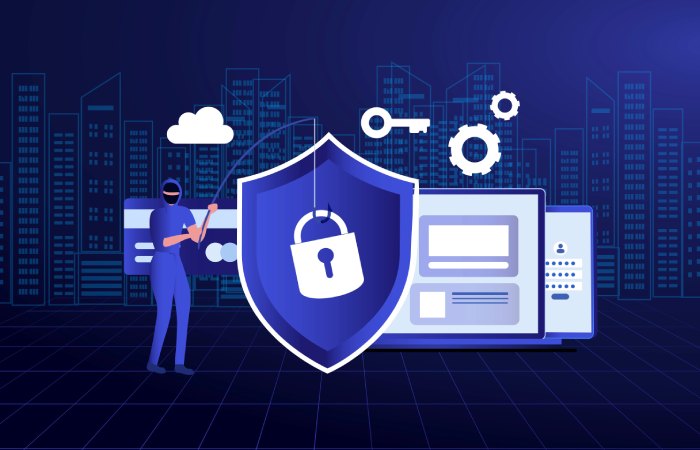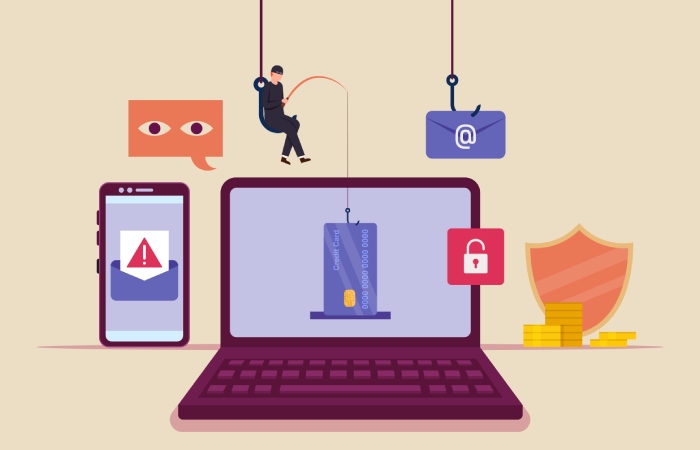Phishing remains one of the most pervasive cyber threats today, as cybercriminals continually refine their tactics to trick individuals and organizations into surrendering sensitive data such as personal information, credit card numbers, bank information, and passwords. Understanding phishing, its variations, and the robust anti-phishing strategies available is crucial in safeguarding digital environments. This article explores these focal areas along with the role of email filtering and detection tools.
Understanding Phishing: What It Is and How It Works
Phishing is a form of social engineering attack used by cybercriminals to deceive victims into divulging confidential information or installing malicious software. Typically delivered via phishing emails that mimic legitimate communication, these messages often contain suspicious links or attachments aimed at directing recipients to fake websites engineered to harvest sensitive data.
The mechanics of phishing hinge on exploiting trust and urgency. Cybercriminals craft emails with a false sense of urgency or an urgent call to action, prompting recipients to act impulsively. These emails may feature generic greetings, mismatched email domains, or obvious spelling errors, which can be red flags for recipients trained in security awareness. Through techniques like email domain spoofing or brand impersonation, attackers masquerade as trusted advisors or reputable companies to bypass suspicion.
Additionally, phishing attacks can propagate through other vectors such as SMS, phone calls (vishing), or social media platforms, but phishing emails remain the most prevalent channel.
Common Types of Phishing Attacks
Spear Phishing
Unlike broad-spectrum phishing, spear phishing targets specific individuals or organizations. Cybercriminals gather detailed information about their victims to craft personalized phishing emails that are more convincing. This tactic increases the likelihood of successful compromise of personal information or login credentials.
Whaling
A subtype of spear phishing, whaling targets high-profile individuals like executives or government officials. These attacks often revolve around business email compromise, wherein attackers impersonate executives within the company to authorize fraudulent transactions or sensitive data disclosure.
Clone Phishing
In clone phishing, attackers replicate legitimate emails previously received by victims but replace links or attachments with malicious counterparts. The familiarity of the content often lowers suspicion.
Pharming
This strategy involves redirecting users from legitimate websites to phishing websites through DNS hijacking or malware, intending to steal credentials or banking information without the user’s awareness.
Social Engineering Enhancements
Phishing attacks generally leverage social engineering to manipulate human psychology. This includes creating an urgent call to action, fabricating security risk scenarios, or threatening identity theft consequences to coerce victims into compliance.
The Impact of Phishing on Individuals and Organizations
The consequences of phishing can be devastating, ranging from financial loss to severe reputational damage and regulatory penalties. Individuals risk exposure of personal information, leading to identity theft, unauthorized credit card transactions, and compromised passwords, which may enable further exploits.
For organizations, the stakes are significantly higher. Phishing can precipitate credential theft, allowing cybercriminals to gain entry to corporate systems and siphon sensitive data. Incidents like business email compromise can lead to large-scale fraud or intellectual property theft. Insider threats may emerge when employees fall victim to phishing scams, jeopardizing collaboration security across platforms like Microsoft Teams or email clients in Microsoft 365.
Regulatory compliance mandates in sectors such as finance and healthcare require robust anti-phishing controls to avoid legal consequences. Furthermore, every phishing scam elevates the overall security risk and imposes financial burdens related to incident response and remediation.
Key Principles of Anti-Phishing Security
Enhancing Security Awareness and Training
An informed workforce is the first line of defense against phishing attacks. Regular security training programs should highlight phishing indicators such as bad grammar, suspicious links, generic greetings, and external sender warnings. Tools like Mimecast Engage Security Awareness help organizations simulate phishing campaigns and improve human risk management.
Implementing Multifactor Authentication (MFA)
Requiring multifactor authentication, or two-step verification, adds an essential layer of defense. Even if credentials are compromised through phishing, this additional hurdle can prevent unauthorized access to accounts containing bank information or personal data.
Deploying Email Authentication Protocols
Technologies such as SPF, DKIM, and DMARC verify the authenticity of email senders to reduce email domain spoofing and phishing email delivery. The configuration of these protocols protects brands from impersonation and helps email filters identify malicious messages.
Leveraging Strong Password Management
Encouraging the use of strong passwords and employing password management solutions lowers the risk that stolen credentials will be abused. Combined with MFA, this practice strengthens account security.
Coordinated Incident Response
Quick identification and reporting of phishing emails to IT support teams or through mechanisms like the Report Phishing feature in Microsoft Outlook reduces dwell time for attacks. Engaging local law enforcement in the case of severe breaches supports law enforcement reporting and broader mitigation efforts.
Email Filtering and Detection Tools
Email remains the primary vector for phishing attacks, necessitating sophisticated email security solutions to combat malicious content.
Advanced Threat Protection (ATP) and ATP Anti-Phishing
Microsoft 365 incorporates Advanced Threat Protection (ATP) with dedicated ATP Anti-phishing policies that analyze incoming messages for phishing characteristics. Features like the Outlook phishing banner alert users to suspected phishing emails by scrutinizing email headers, mismatched email domains, and suspicious attachments. Hover over links functionality enables recipients to preview destination URLs before clicking, helping identify fake websites.
Mimecast Email Security
Mimecast provides comprehensive email filtering and scam detection that blocks spam, phishing scams, and malicious content. Its platform integrates with Microsoft Exchange and Microsoft Outlook seamlessly to provide real-time protection and incident reporting.
Email Filters and Spam Protection
Robust email filters scan for patterns typical of phishing attacks, including phishing email subject lines, suspicious links, and attachments. They use heuristics and machine learning models to prevent phishing emails from reaching inboxes, reducing user exposure. Security teams can also use LLM evaluation to check how well their systems catch newer, more subtle phishing attempts, helping them improve overall protection.
Collaboration Security in Microsoft Teams and Outlook.com
Phishing does not stop at email; malicious links and spoofed messages appear in collaboration tools like Microsoft Teams. Integration of threat protection across these platforms prevents the delivery of phishing scam messages and unsafe content. For example, Microsoft Defender offers built-in security layers for Office 365 apps to strengthen protection.
User Engagement Tools
User reporting tools enable employees to flag suspicious messages swiftly. The “Report Unsafe Site” feature in Microsoft Edge supports real-time feedback to cybersecurity teams, enhancing defense capabilities.
By comprehensively understanding phishing and deploying layered anti-phishing defenses—ranging from education and policy enforcement to advanced detection technologies—individuals and organizations can significantly reduce their exposure to phishing attacks and protect sensitive personal information, credit card numbers, bank information, and passwords from cybercriminals.
Browser-Based Anti-Phishing Extensions and Features
Modern web browsers have become the frontline defense against phishing attacks by integrating advanced anti-phishing features and supporting robust extensions that can detect and block phishing websites and malicious content before users interact with them. Microsoft Edge, for instance, incorporates native phishing protection mechanisms leveraging Microsoft Defender SmartScreen technology, which analyzes URLs and webpage behavior in real-time to identify suspicious links and warn users of phishing scams.
When users attempt to visit a phishing website, the browser displays alerts preventing the exposure of sensitive personal information, credit card numbers, or bank information to cybercriminals disguised behind fake websites. Additionally, third-party extensions complement browsers’ built-in capabilities by enhancing detection accuracy for phishing emails, suspicious attachments, and URLs that exhibit characteristics of social engineering or brand impersonation.
Microsoft 365 users benefit from the integration of ATP Anti-phishing features that work in concert with Outlook phishing banners and email filters to highlight email domain spoofing, mismatched email domains, and generic greetings often found in phishing emails. Hover-over link inspection tools, commonly found in browser extensions, enable users to preview URLs safely on mouseover, thus preventing accidental clicks on external senders known for phishing scams.
Mimecast Email Security and Microsoft Defender both offer browser plugins and add-ons that help monitor for malicious content embedded within Teams messages, Outlook.com communications, and web mail clients. Users must ensure that browsers and extensions remain up to date to benefit from continuous improvements driven by emerging threat intelligence.
Multi-Factor Authentication as a Defense Mechanism
While robust password management and strong passwords form the foundation of account security, multifactor authentication (MFA) is a critical layer in defending against phishing attacks. Cybercriminals often target passwords through phishing emails specifically designed to extract this sensitive information. Implementing two-step verification, such as a hardware token, biometric verification, or one-time passcodes delivered via SMS or authentication apps, significantly reduces the risk of unauthorized access to email clients and cloud platforms like Microsoft 365 and Office 365.
MFA prevents attackers from leveraging stolen credentials alone and deters business email compromise scenarios where phishing emails impersonate trusted advisors or brand executives, creating a false sense of urgency to bypass normal security checks. Furthermore, MFA integration in tools like Microsoft Teams and Outlook shields collaboration security efforts by limiting insider threats and making it harder for attackers to exploit compromised sessions.
Organizations adopting ATP Anti-phishing protocols alongside MFA benefit from layered security, enhancing regulatory compliance and minimizing security risk from email and collaboration attacks. It’s essential to couple MFA implementations with security training to ensure users understand the importance of this defense mechanism and avoid social engineering traps commonly embedded in phishing scams.
User Education and Awareness Training
Human risk management remains paramount in the fight against phishing attacks, given that cybercriminals frequently rely on social engineering tactics to trick end users. Although technological safeguards like spam filters and email authentication play significant roles, continuous security awareness training elevates an organization’s defenses by equipping users with the knowledge to recognize phishing emails and suspicious messages.
Effective training programs include simulated phishing exercises using platforms such as Mimecast Engage Security Awareness or Microsoft Defender campaigns to help employees identify phishing websites, suspicious links, and red flags like bad grammar, spelling errors, generic greetings, and urgent call-to-action phrases. Educating employees on verifying email headers, spotting email domain spoofing, and understanding the nuances of external sender alerts adds mental barriers preventing wrongful disclosure of personal information, passwords, or financial data.
Organizations should encourage a culture where employees feel empowered to report phishing attempts promptly via built-in email client features like Microsoft Outlook’s “Report Phishing” button or third-party solutions, improving incident response times. IT Support teams must collaborate closely with security awareness trainers to update content regularly, addressing emerging tactics used by cybercriminals, and maintaining high threat protection standards across the company.
Incident Response Strategies for Phishing Attacks
Despite preventive measures, some phishing attempts inevitably succeed, necessitating a robust incident response framework to limit damages. Upon detection of a phishing attack—whether through user reports, automated alerts from Mimecast Incydr, Microsoft Defender, or ATP Anti-phishing controls—organizations must follow a predefined process involving containment, eradication, recovery, and lessons learned.
Immediate containment includes isolating affected systems and accounts to prevent lateral movement by cybercriminals or insider threats exploiting phishing emails or fake websites. For example, revoking compromised user credentials and resetting passwords prevents further access to personal information, bank information, or credit card numbers. Next, IT teams collaborate with regulatory compliance officers and potentially law enforcement reporting entities to document and analyze the breach.
Eradication involves removing malicious content, such as suspicious attachments delivered through email phishing campaigns, and strengthening email security configurations. Recovery efforts restore normal operations while ensuring no residual threats remain embedded in Microsoft 365 or collaboration tools like Teams. Post-incident, organizations should conduct security training refreshers emphasizing lessons learned, refine threat protection strategies, and consider investing in enhanced technologies like Mimecast Aware Governance to optimize governance policies.
Ultimately, efficient coordination between technology, people, and processes ensures organizations can respond effectively to phishing scams and minimize the impact on organizational assets and user trust.
Emerging Technologies and Future Trends in Anti-Phishing Security
The evolution of phishing tactics demands continuous advancement in anti-phishing technologies. Emerging innovations heavily leverage artificial intelligence (AI) and machine learning to improve scam detection accuracy, decrease false positives, and adapt dynamically to new phishing email forms and phishing website signatures.
For instance, AI-driven solutions integrated into Microsoft Defender Advanced Threat Protection analyze email headers, contextual cues, and user behavioral patterns to identify email and collaboration attacks with increasing sophistication. Behavioral analytics track unusual login attempts, flagging potential business email compromise or insider threats early. Moreover, cloud-based collaborative security frameworks provided by Microsoft 365 and Mimecast enhance real-time threat intelligence sharing, allowing swift response to new phishing techniques.
Zero trust architectures emphasize continuous verification, with adaptive multifactor authentication that adjusts requirements based on risk assessment, user behavior, and device health. Additionally, emerging standards for email authentication protocols, such as DMARC enforcement combined with BIMI (Brand Indicators for Message Identification), improve visibility into phishing email sources and combat email domain spoofing.
Phishing defenses also increasingly encompass integration with incident response automation, enabling faster containment and mitigation through predefined playbooks. As phishing email tactics grow more personalized and socially engineered, human-centric approaches complement technological advances through improved security awareness programs using immersive training and gamification.
Maintaining vigilance with these emerging tools and trends is essential for organizations aiming to stay one step ahead of cybercriminals targeting sensitive personal details, passwords, credit card numbers, and bank information.
FAQs
What is a phishing email, and how does it differ from regular spam?
A phishing email is a malicious communication designed to trick recipients into revealing sensitive personal information like passwords, credit card numbers, or bank information, often through impersonation or fake websites. Unlike regular spam, phishing emails employ social engineering tactics and create a false sense of urgency to prompt immediate action.
How do browser-based anti-phishing features protect me from phishing attacks?
Browser-based anti-phishing features, such as those found in Microsoft Edge, utilize real-time threat detection to block access to phishing websites and warn users about suspicious links. They analyze URLs, inspect email client interactions, and use technologies like Microsoft Defender SmartScreen to prevent exposure to malicious content.
Why is multifactor authentication important in preventing phishing attacks?
Multifactor authentication adds a security layer beyond passwords by requiring secondary verification steps such as one-time codes or biometric validation. This blocks cybercriminals from accessing accounts even if they obtain passwords through phishing scams, significantly reducing security risks.
How can user education reduce the risk of falling victim to phishing scams?
Security awareness training educates users on identifying phishing characteristics such as mismatched email domains, generic greetings, and suspicious attachments. It empowers employees to remain vigilant, recognize phishing emails, and report suspicious messages, thereby reducing human risk.
What steps should be taken in responding to a phishing attack?
An effective incident response involves timely containment of compromised accounts, removing malicious content, resetting passwords, and engaging IT teams alongside regulatory and law enforcement agencies when necessary. Post-incident analysis and user training are critical for preventing recurrence.
Key Takeaways
- Browser-based anti-phishing extensions and native features in Microsoft Edge and other browsers play a crucial role in blocking phishing websites and suspicious links.
- Multifactor authentication provides an essential second layer of defense by mitigating risks associated with stolen passwords in phishing attacks.
- Continuous user education and security awareness campaigns empower individuals to identify and report phishing emails, reducing the success rate of cybercriminal social engineering.
- A structured incident response strategy involving containment, eradication, and collaboration with law enforcement mitigates the impact of phishing attacks effectively.
- Emerging anti-phishing technologies, including AI-driven detection, zero trust models, and automated incident response, are shaping the future of phishing defense.


